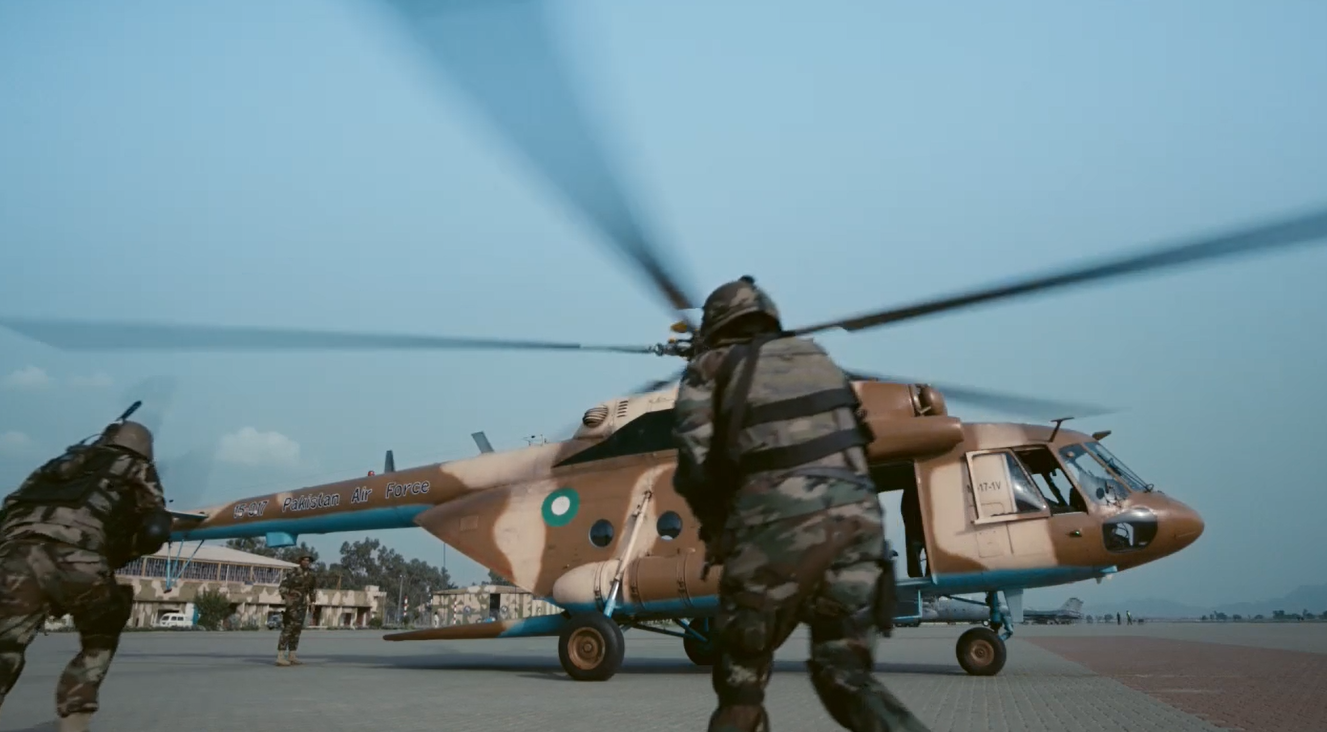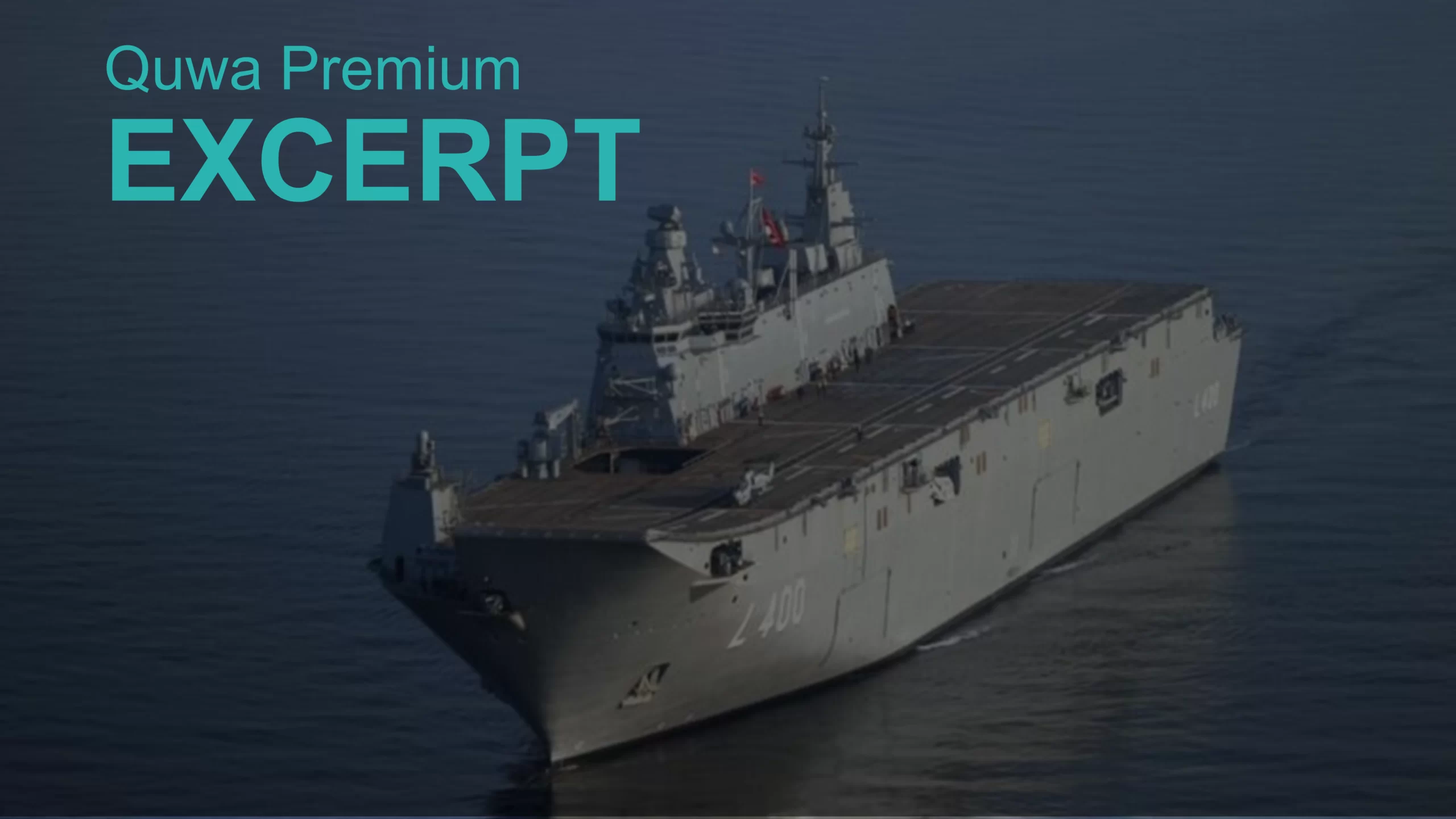50Views 4Comments

Pakistan’s Shift to COIN Part I: Tumultuous Beginnings
27 November 2015
By Bilal Khan
From December onwards you will notice a lot of activity on this website. For one thing, I will be looking to publish a short-hand news analysis piece (<1000 words) every alternate day, with the eventual aim of going daily. Second, one day of the week will be devoted to a special series of long-form articles (2000+ words) on a topic or issue that I have spent a fair bit of time researching and thinking about. The JF-17 series from earlier is an example of that, but the scope will not be limited to just aerial warfare (or just Pakistan). In some cases these long-form pieces will be parts of a larger series, in other instances, they will be standalone pieces.
This week I am going to start with a series devoted to studying Pakistan’s transition to counterinsurgency (COIN) warfare. The first part, which you can read below, is a broad overview, but over next few weeks I will be taking a deeper look at the specifics, e.g. Pakistan Army Aviation, the Army infantry, the Air Force, drone warfare, etc.
——————
——————
Pakistan’s Shift to COIN Part I: Tumultuous Beginnings
By Bilal Khan
America’s invasion of Afghanistan at the heels of the September 11 attacks caused a significant shift in South Asia’s political and security dynamics. Gone were the days of the Cold War when Washington was relatively cold to India and semi-tolerant of Pakistan’s self-interested machinations. With the U.S physically placing itself within the region and planning for a long-term – if not permanent – presence, it could not afford to let Afghanistan, Pakistan or India off to do ‘their own thing’ (so to speak); there was a plan for the region, and it needed to be implemented.
As far as Washington was (and still is) concerned, its fight in Afghanistan was of vital importance for the U.S’ long-term interests, not just within South Asia, but the whole stretch, from Southwest Asia to Southeast Asia and the Pacific. And in order to see its interests come to fruition, the U.S depended on Pakistan to seal Afghanistan’s eastern flank and neutralize the support-networks and havens available to the Taliban. But Pakistan had problems in this regard, as for much of the first decade of the 2000s it was conflicted between pushing against India over Kashmir and reeling from its loss of “strategic depth” in Afghanistan (and having to turn on its old partners – i.e. the Taliban).
In addition to the internal policy tension, the Pakistani armed forces were not trained to think or fight in terms of counterinsurgency (COIN), and as a result, many of the armed forces’ early engagements were wrought with casualties and inefficiencies. At the height of the fighting it was not uncommon to hear of dozens of Pakistani soldiers (particularly on the paramilitary side) being killed or captured, or of posts being overrun. Even the Special Service Group (SSG), Pakistan’s special operations forces (SOF), noted difficulties in the Federally Administered Tribal Areas (FATA). A white paper from the Center of Naval Analyses detailed that between 2003 and 2008 the SSG “conducted 122 separate counterterrorist operations in FATA and Northwest Frontier Province (NWFP) [known as Khyber Pakthunkhwa or KPK today]. While SSG operations resulted in 178 terrorist dead and 211 captured, the SSG suffered 42 killed and 90 wounded.”[1]
Combined with the cold public sentiment towards the operations in FATA and the U.S occupation of Afghanistan in particular, the armed forces repeatedly settled for peace agreements (especially in 2005-2008) with the Taliban et. al in exchange for the latter’s agreement to not target the Pakistani state.[2]
By 2014 however, the picture was strikingly different. In response to thousands of deadly terrorist attacks throughout the country (and in particular the attack on Army Public School in Peshawar), public opinion had gradually shifted in support of the armed forces, especially against those perceived as being a major threat to the populace and state. In addition, as a result of a doctrinal and operational shift within the armed forces, Pakistan developed a stronger capacity for COIN. In fact, General Raheel Sharif, the man who added counterinsurgency as a key aspect of Pakistan Military Academy (PMA) Kakul’s curriculum, was put in charge in 2013 as the Pakistan Army Chief of Army Staff.
Brief Overview of Pakistan’s COIN Campaigns (2002-2010)
Prior to 9/11, counterinsurgency, especially within FATA, was not an issue of concern for the Pakistani military, whose primary focus until then was external state-level threats, particularly India. The Taliban’s presence in Afghanistan was not a problem for Islamabad, rather, it was a source of additional strength for the Pakistan military who had opted to rely on it as a means to maintain a presence in Afghanistan.
After 9/11, America’s entry into Afghanistan and its mission to displace the Taliban forced that dynamic to change. Noticing the Taliban’s deep linkages to Pakistan’s tribal belt, the U.S began pushing the Pakistani military to essentially fight its old partner from the 1990s. That pressure as well as instances of armed blowback (by factions of the Taliban and al-Qaeda) against Musharraf’s policies (which were supportive of the U.S invasion) eventually resulted in the Pakistani military’s first forays into FATA.
Operation Al Mizan (‘Justice’) from 2002-2006 was the first overarching Pakistani campaign in FATA and it was comprised of several smaller operations, particularly in South Waziristan, a FATA district.[3] The military declared the campaign a success, but that foray initiated a decade-long conflict within the country, particularly against the Tehreek-e-Taliban Pakistan (TTP), an amalgamation of armed factions whose primary objective was to fight the Pakistani state. In 2005 the Pakistani government signed a peace agreement with the TTP’s leader, Baitullah Mehsud, resulting in the withdrawal of Pakistani troops from South Waziristan. Following that however, Pakistan had begun incurring a long and deadly series of terrorist attacks (reaching 2148 attacks in 2008 alone).[4]
In 2007 the Pakistani military launched another campaign in South Waziristan, Operation Zalzala (‘Earthquake’), but this time it was against the TTP led by Baitullah Mehsud. In Fall 2007 the military also initiated Operation Rah-e-Haq (‘Path of Truth’) in an attempt to secure Swat from al-Qaeda and their allies. In 2008 another militant force, this time led by Qari Zia Rahman, pushed into Bajaur Agency.[5]
In July 2008 and January 2009 the military initiated the second and third phases (respectively) of Rah-e-Haq in an attempt to clear the Swat valley of armed anti-state tribal entrants such as the Tehreek-e-Nifaze-Shariat-e-Mohammadi (TNSM) and Lashkar-e-Islam. However, the fighting was brought to an end in February 2009 through an agreement (known as the Malakand Accord) between the Pakistani government and TNSM, enabling the TNSM and its allies (al Qaeda and Lashkar-e-Islam) to expand their writ in Swat as well as in surrounding areas, such as Buner.[6]
In May 2009 the Pakistani military re-initiated its campaign in FATA, starting with Swat through Operation Rah-e-Rast, and by the end of the month the military had regained control of Swat. Much of the al-Qaeda and Lashkar-e-Islam leadership was killed during this campaign as well. In June 2009, the campaign was expanded – under Rah-e-Nijat (‘Path to Salvation’) – to once again include South Waziristan.[7] Rah-e-Nijat was concluded in December 2009, with the result being the apparent displacement of the TTP from South Waziristan.
Exposed Deficiencies and Recalibration
Pakistan’s initial armed engagements in FATA were burdened with clear shortfalls, especially in terms of the (COIN-relevant) equipment, training and support available to its infantry. Some of the most obvious deficiencies were the most basic, such as the lack of body armour or dependence on non-armoured vehicles for transport within hot-zones. Others were systemic, owing to not only Pakistan’s central focus on fighting India, but also the decade’s long arms sanctions in the 1990s that had prevented the Pakistani military from readily acquiring modern armaments necessary for COIN operations. Examples of this included, among others, the lack of a sufficient number of dedicated attack helicopters, lack of infantry equipped with and trained to use night vision googles (NVG) and limited aerial precision strike capabilities.
Besides lacking appropriate material means, the Pakistani military’s organizational inertia was also a challenge. For example, prior to FATA the military’s primary service arms (Army, Navy and Air Force) operated in relative isolation from one another in terms of operational planning and coordination. Successful COIN requires tight coordination as well as agile collective reactivity, especially between one’s land and air forces, and it was apparent that Pakistan lacked this in 2002-2006. In addition, by virtue of COIN not being an issue (compared to India and external threats generally) until America’s entry into Afghanistan, COIN was not a primary area of instruction and training for the military’s officers and soldiers.
These organization and methodological issues were brazenly apparent in the military’s initial series of operations in FATA. Sameer Lalwani’s article on the Combating Terrorism Center website listed the series of inappropriate tactical and strategic decisions made by the Pakistani military during this time:
The Pakistan military’s failure has been attributed to a number of poor tactical choices since 2002, including: 1) excessive focus on enemy targeting and “high-value targets”; 2) overdependence on large-scale multi-unit forces (mostly brigade level) rather than smaller units dispersed among the population; 3) frequent deployment of forces to static garrisons or defensive positions inhibiting proactive actions; 4) inadequate resources for flexible responses to contingencies such as quick reaction forces; 5) over-reliance on kinetic “direct-action” operations and heavy firepower; and finally 6) an underuse of local forces’ capacity and knowledge.[4][8]
The overarching problem with the Pakistan military’s approach to COIN in 2002-2006 was how it mirrored a conventional engagement against another country, and not against loosely federated armed groups deeply connected to the region’s social fabric.
For example, if one were to look at the first point, “excessive focus on enemy targeting and “high-value targets [HVT]”, we find that the Army was focused on displacing the immediate and most apparent armed threat. This basically meant enemy fighters and the leadership, with practically little else involved otherwise, such as pulling the population over to its side.[9] If one can recall, in those years the Army would go into FATA, engage in an operation, declare it a “success”, pull out, and then a few months later the “miscreants” would return. Rinse, wash and repeat.
The second point, “overdependence on large-scale multi-unit forces (mostly brigade level) rather than smaller units dispersed among the population”, illustrated the Army’s doctrine of using large scale operations to “clear” an area, as opposed to actually controlling it with a wide and scalable presence of well trained soldiers.[10] This issue lends to the third point about the Army’s personnel being consigned to “to static garrisons or defensive positions inhibiting proactive actions.” The Army’s personnel would basically hole themselves into fortified defensive positions in bases or posts that were generally away from the epicenters of where the insurgencies were being generated.[11] Part of this shortfall was due to incorrect doctrine, but the lack of solid ‘mobility assets’ in the form of general utility helicopters and Mine-Resistant Ambush Protection (MRAP) vehicles also had a role in constricting the flexible use of infantry.[12] When the Army would deploy personnel, it would deploy them in multiple battalion sized (300-800 man) units[13], thus making the use of infantry rigid and inappropriate for COIN. Much of the burden of undertaking ad hoc operations would fall to the Pakistan Army’s SOF arm, the Special Services Group (SSG) and its Quick Reaction Forces (QRF), which in turn made for a very limited pool of COIN-suitable personnel.
The fifth point, “over-reliance on kinetic “direct-action” operations and heavy firepower” refers to the way the Army attempted to compensate for its above-noted inefficiencies (which resulted in considerable maneuvering space for the insurgents). In order to offset those problems, the Pakistani military depended on high powered force in the form of artillery and air strikes. These methods were unabashedly punitive upon the populace. For example the bombardment of Miranshah in 2006 resulted in the destruction of numerous hotels, markets and even homes.[14] David Kilcullen on his paper for the Brookings Institute stated that following these strikes, “[no] ground-based follow-up was mounted: the response was primarily kinetic suppression (or retaliation) leading to alienation of the population.”[15] The military’s “kinetic focus” during this time was a major reason why considerable public opinion in FATA had built-up against the military and its operations, enabling the TTP and others to more readily ‘address’ that resentment.
The sixth obstacle, “an underuse of local forces’ capacity and knowledge”, stemmed from the Pakistan Army’s general reluctance to include the Frontier Corps and other local actors into the planning and implementation of its operations.[16] David Kilcullen’s point below aptly explains the causes that drove this approach and the ramifications it had risked:
[This] attitude [arose] from the Army’s kinetic approach, which [led] some of Army officers to judge local forces as lacking capacity due to their limited firepower and mobility. Regular officers [had] also sometimes tended to discount the value of local knowledge, cultural understanding, and local contacts. Indeed, these characteristics [made] some regular officers doubt the loyalty of local forces… [Regular] officers have tended to exclude Frontier Corps commanders from planning and maneuver operations, leaving them to static guard duties.[17]
The collective impact of these problems came to full bare from 2005 to 2009 when the TTP and its allies made significant in-roads throughout FATA.[18] At the heels of almost every major operation by the military, the insurgents would manage to regroup and respond, at times with greater coordination, effectiveness and lethality. While the TTP and its allies were never in a position to topple the Pakistani government, they were increasingly reaching the point of steering Pakistan’s foreign policies in their favour. For the U.S the stakes were obvious, Pakistan’s withdrawal of support from the mission in Afghanistan would make the mission unfeasible to sustain over the long-term. In 2005-2006 the U.S government and Pakistan’s military leadership embarked on making the Pakistani military an effective COIN force.
Next week, Part II will focus on the Pakistan Army Aviation corps.
[1] Eric Thompson and Patricio Asfura-Heim. “Assessments of the Impact of 1206-Funded Projects in Selected Countries: Lebanon, Pakistan, Yemen, São Tomé and Principe.” Center of Naval Analysis. July 2008. p24
[2] Daud Khattak. “Evaluation Pakistan’s Offensives in Swat and FATA.” Combating Terrorism Center (West Point). 31 October 2011.
[3] Zahid Ali Khan. “Military operations in FATA and PATA: implications for Pakistan.” Institute of Strategic Studies Islamabad: p129-130.
[4] Ibid. p133
[5] Ibid.
[6] Ibid. p134-135
[7] Ibid. p135-136
[8] Sameer Lalwani. “The Pakistan Military’s Adaption to Counterinsurgency in 2009.” Counter Terrorism Center at West Point. 13 January 2010: https://www.ctc.usma.edu/posts/the-pakistan-military%E2%80%99s-adaptation-to-counterinsurgency-in-2009
[9] David J. Kilcullen. “Terrain Tribes and Terrorists: Pakistan, 2006-2008.” Brookings Counterinsurgency and Pakistan Paper Seires. No. 3, 10 September 2009.
[10] Kilcullen. 2009
[11] Ibid.
[12] Ibid.
[13] Ibid.
[14] Ibid.
[15] Ibid.
[16] Ibid.
[17] Ibid.
[18] Ahmed Rashid. “Pakistan’s Continued Failure to Adopt a Counterinsurgency Strategy.” Counter Terrorism Center at West Point. 15 March 2009: https://www.ctc.usma.edu/posts/pakistan%E2%80%99s-continued-failure-to-adopt-a-counterinsurgency-strategy


